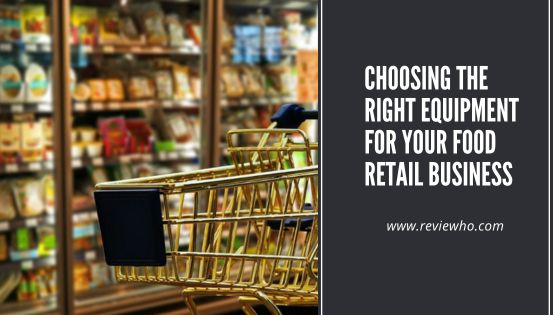In the world of food retail, success relies on the quality of your products and also on the efficiency of your operations. Choosing the right equipment is paramount, as it can significantly impact your business’s productivity, profitability, and customer satisfaction. Whether you’re launching a new venture or upgrading existing facilities, here’s a comprehensive guide to selecting the perfect equipment for your food retail business.
Assess Your Needs
Before diving into equipment selection, take stock of your specific requirements. Consider factors such as the type of food you’ll be retailing, your production volume, available space, budget constraints, and any regulatory requirements. Knowing your needs will streamline the decision-making process and ensure you invest in equipment that aligns with your business goals.
Quality and Durability
Opt for equipment known for its quality and durability. While it might require more of an initial investment, robust machinery will save you money in the long run by lessening repair and replacement costs. Search for reputable brands with a track record of reliability and longevity, and prioritize equipment constructed from high-grade materials designed to meet the demands of a commercial kitchen environment.
Efficiency and Productivity
Efficiency is key to making the most of productivity and profitability in food retail. Choose equipment that streamlines your workflow, reduces labor requirements, and enhances operational efficiency. Look for features such as programmable settings, rapid heating or cooling capabilities, and user-friendly interfaces that empower your staff to work more effectively.
Think about Space
Space is often at a premium in food retail establishments, so it’s crucial to select equipment that fits seamlessly into your layout without overcrowding or causing logistical bottlenecks. Prioritize compact, space-saving designs without compromising on functionality or performance. Consider multi-functional equipment like display fridges that showcase your products as well as keeps them safe for consumption.
Energy Efficiency
Energy costs are a big expense for food retail businesses, so prioritizing energy-efficient equipment can lead to substantial long-term savings. Look for appliances with ENERGY STAR certification or other energy-efficient ratings, as these models are designed to consume less energy without sacrificing performance. Investing in energy-efficient equipment not only reduces your operating costs but also demonstrates your commitment to sustainability.
Safety and Compliance
Complying with health and safety rules is a non-negotiable. Ensure that all equipment meets relevant safety standards and regulatory requirements to protect both your customers and your business reputation. Look for features like automatic shut-off mechanisms, temperature controls, and easy-to-clean surfaces to minimize the risk of foodborne illnesses and ensure compliance with food safety guidelines.
Maintenance and Support
Regular maintenance will keep your equipment running smoothly and prevent costly breakdowns. Choose equipment with accessible parts and straightforward maintenance requirements to facilitate servicing and repairs. On top of this, think about the availability of technical support, warranty coverage, and spare parts to ensure prompt resolution of any issues that arise.
Budget and Return on Investment
While investing in quality equipment is important, it’s equally crucial to stay within your budgetary constraints and ensure a favorable return on investment (ROI). Carry out a cost-benefit analysis to evaluate the long-term financial implications of your equipment purchases, considering factors like energy savings, labor costs, and potential revenue growth. Balance upfront costs with anticipated returns to make informed decisions that maximize your ROI.




